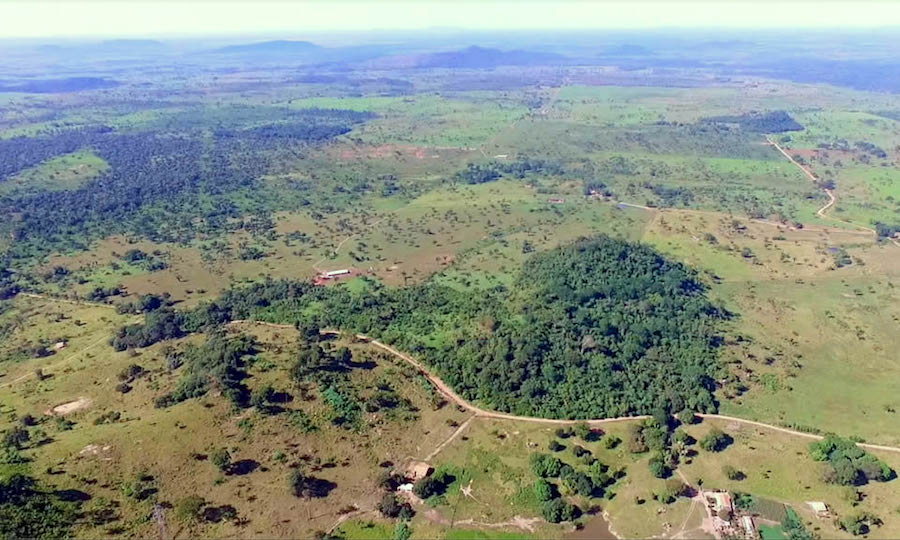More headline risk around Alberta’s oil sands industry
July hasn’t been a very good media month for Alberta’s oil-sands industry, and not just because of all the coverage given the fifth anniversary of the Enbridge Inc. spill in the Kalamazoo River of northern Michigan.
The Wall Street Journal had a one-two oil-sands punch with separate articles on the same day last week, one chronicling setbacks in Canada’s overall aspirations, the other exploring how executives at Cnooc Ltd. of China evidently blew it two years ago by paying $15 billion for Nexen Inc.
The headline on the former: “Falling Crude Prices Upend Canada’s Oil Sands Projects.”
On the latter: “How a Chinese Company Slipped on Canada’s Oil Sands.” The Journal named names in the subhead on that one: “State-controlled Cnooc bought Canada’s Nexen to expand globally but now faces poor production, oil spill.”
The spill mentioned there happened two weeks ago and dumped “31,500 barrels of a mixture of crude oil, wastewater and sand in northern Alberta,” as the paper’s Chester Dawson and Brian Spegele noted in what must have been an embarrassing item for Cnooc with its inclusion of a grim couple of remarks from company people:
“Cnooc Chief Executive Li Fanrong told staffers Nexen provided just 2% of Cnooc’s profits, say attendees, warning that ‘2% is not enough.’”
“’I never thought this was a good deal,’” says Chen Weidong, the recently retired chief energy researcher at Cnooc’s Energy Economics Institute, an internal research office.”
Stock in Cnooc, which is publically traded, has lost half its value over the past five years, hundreds of millions of dollars of “asset impairments” have been logged, and coverage like the Journal’s only adds to the already substantial headline risk facing investors in Cnooc and other oil-sands companies. The industry’s long saga of pipeline accidents doesn’t help, with big outfits like the Canadian Broadcasting Company running little national reminders like it did in on July 17 chronicling “six major oil spill in recent history.”
THE PRESS HAS AN AFFINITY FOR ANNIVERSARIES, ESPECIALLY WHEN THEY OCCUR IN MILESTONE DIGITS—THE FIFTH, THE 10TH, THE 50TH—an affection apparent as Year Five rolled around on the Enbridge spill.
Safiya Merchant, writing for the Battle Creek Enquirer, salted her article with gruesome detail, as did David Hasemeyer in a piece on InsideClimate News that featured first-person memories and provocative detail. “By the time Enbridge shut off the flow of oil—17 hours after the rupture—the Kalamazoo ran black with oil.” (InsideClimate News, the news mouse that roared, won a Pulitzer Prize for its coverage of the spill, which Enbridge managed at the time to keep mostly out of the mainstream national press).
Jennifer Skene, blogging for the National Resource Defense Council, added this note on how the disaster has required years of mitigation: “It was not until the fall of 2014—more than four years after the spill—that Enbridge completed its cleanup obligations, which included dredging the river to recover the sunken oil and uprooting trees. The river’s ecosystem is still not the same, and sections are still contaminated.”
News sites across Michigan from the Detroit Free Press to the tiny Alpena News and as far away as San Antonio and Washington picked up the AP blurb on the fifth-anniversary rally at the site of the spill. The Huffington Post ran a column titled “Remember the Kalamazoo.”
Meanwhile in Calgary, the biggest paper in oil-sands country cited research by IHS that sees oil-sands growth projection in northern Alberta falling short of earlier expectations. Dan Healing in the July 22 Calgary Herald: “Alberta production from the oil sands is expected to grow by 800,000 barrels per day to about 2.9 million bpd by 2020, think-tank IHS predicted in a new report Tuesday. That’s down by 280,000 bpd from the 1.08 million bpd growth it predicted last year when world oil prices were twice as high.”
Healing notes similar revisions by RBC Dominion Securities analysts and reports that also—as explored more fully in the first Wall Street Journal article noted above—oil-sands petroleum is too costly to be competitive.
HEADLINE RISK AND MORE HEADLINE RISK, AND THE MOMENTUM ONLY GROWS. In April, IEEFA’s Tom Sanzillo detailed the ill-advised oil-sands ventures of Teck Resources (A Tough Road on Oil Sands Investment”).
That critique has shown legs, as seen in the latest major press coverage of the Vancouver-based company’s project, from a couple of weeks back by Reuters. “Teck Delays High-Cost Canada Oil Sands Project” reports Susan Taylor, who has this as her lead: “Teck Resources Ltd is delaying development of its massive, high-cost Frontier oil sands project in northern Alberta by five years at a time when oil prices show few signs of recovering from current depressed levels.”
And then—in another Calgary Herald headline, only not about oil sands but another energy sector Teck is in trouble on—there’s this one from last week: “Glut of Coal Means More Production Cuts Are Possible, Teck Resources Says.”
By Karl Cates, director of media relations at the Institute for Energy Economics and Financial Analysis | IEEFA.org
{{ commodity.name }}
{{ post.title }}
{{ post.date }}

Comments